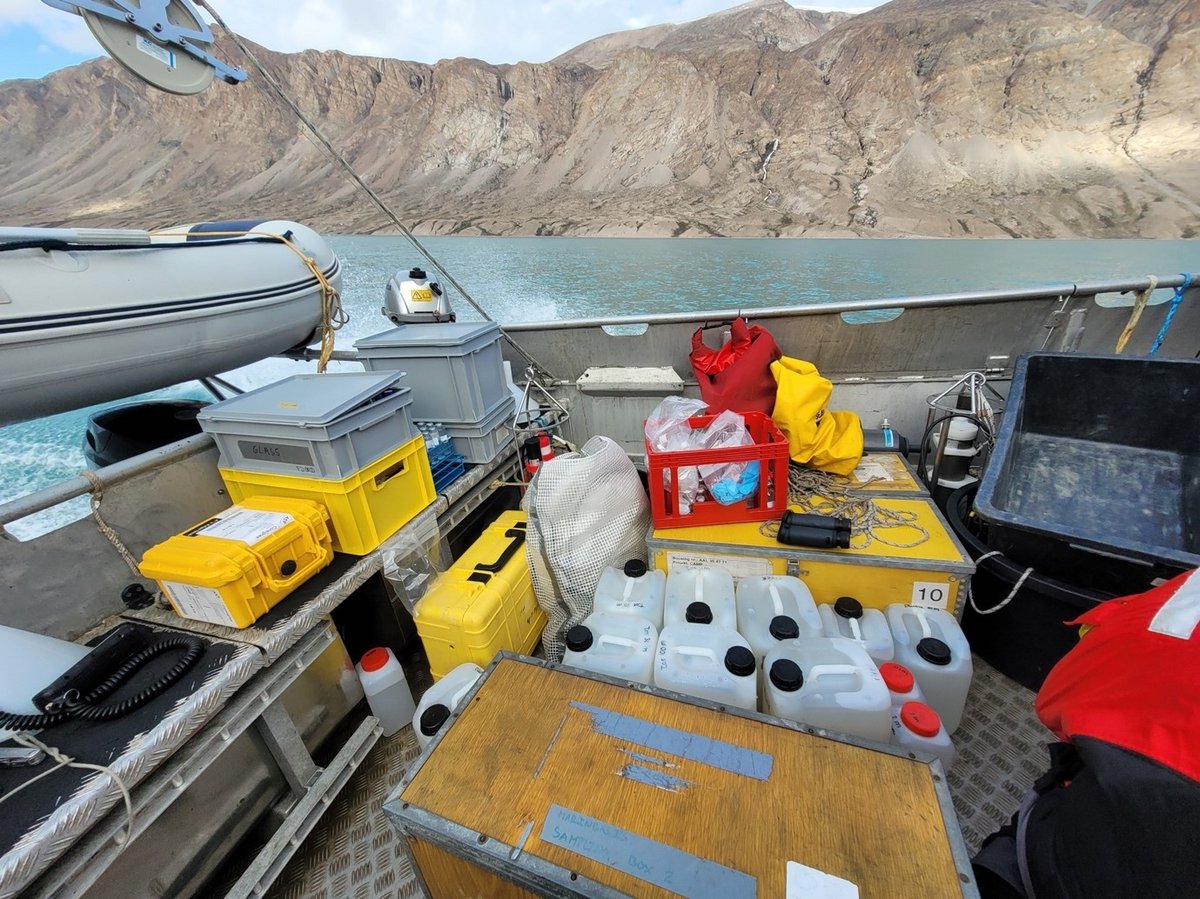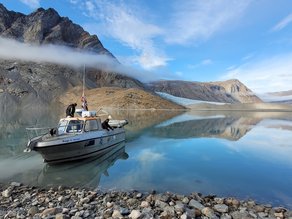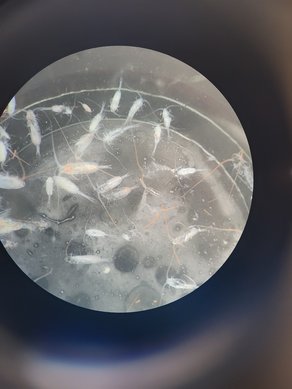Two young scientists share their experiences doing fieldwork in remote Northeast Greenland, check out their blog
The samples are here
Another week has passed, and the samples I was waiting for finally came in, all at the same time! That meant that now it was my turn to process the water samples and work through the night. As the water sample sits in its bottle longer, it is more likely to change compared to conditions in the field, so it’s better to deal with them straight away.

One aim of our samplings here is to take samples of the lower Arctic coastal food web (algae and zooplankton) of Young Sound, from inside the fjord nearest to the river inlet of the glacial river in “Tyrolerdal”, all the way to the outside of the fjord in the salty marine waters resembling the open ocean. In the inner fjord, the glacial “Tyroler” river is connected to a land-terminating glacier, which means that large amounts of sediments are flushed into the fjord, making the surface waters very murky. These conditions are different from coasts with marine-terminating glaciers that are also present in Eastern Greenland and that may also receive sediments, however much of the sediments are transported into the seawater at deeper depths, so only the finest sediments rise to the surface with the buoyant freshwater and so the surface water stays clearer.

The Tyroler river, however, is very murky, and so was the plume streaming into the bay. I was surprised to see that at some point when approaching the plume, the water became very clear, and just a few meters later the water became very murky. It made me wonder if this is due to flocculation: the sticking together of particles when fresh-and salty water are mixing, resulting in everything sinking out to the bottom rapidly, leaving the water column clear. It was also surprising to see there were still zooplankton in the murky plume, just where the river enters the fjord! As silt particles are heavy and can reduce light, it may be hard for algae- food of the zooplankton- to grow, and for the predating zooplankton to find their prey. But they were still there! Tough crowd, those copepods.




After spending a few great hours in the desolated delta of the glacier, we collected some samples to look at volatile compounds for Johnna and Alina back home in Aarhus, and after getting home––there was JUST enough fuel left––the long sampling processing days began. At this point everyone at the house is just so tired. But no one cares, because we are happy to be in this beautiful environment and privileged enough to study this beautiful ecosystem as our jobs.
